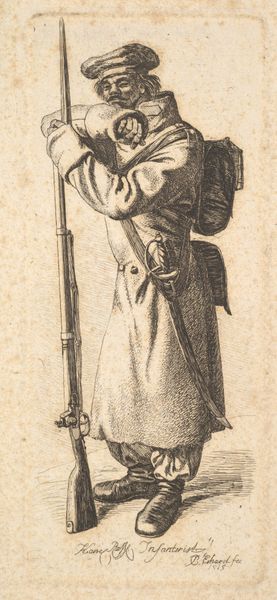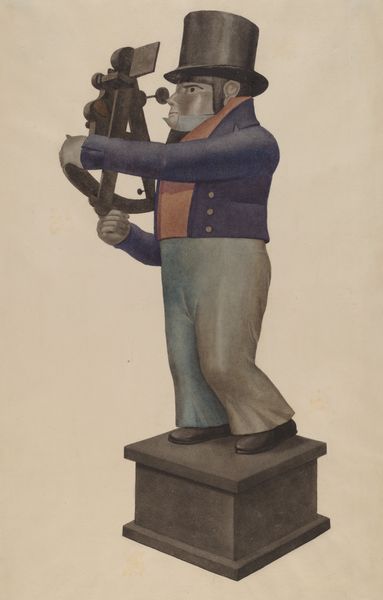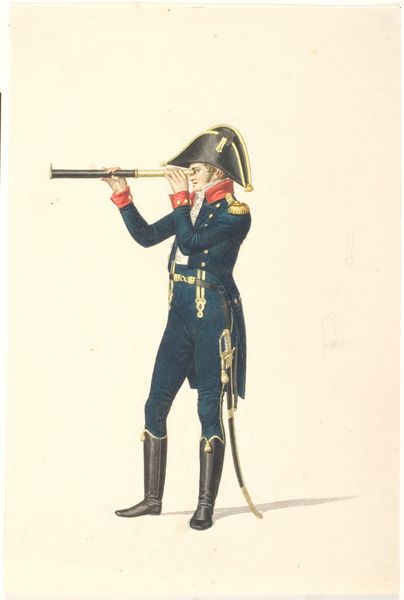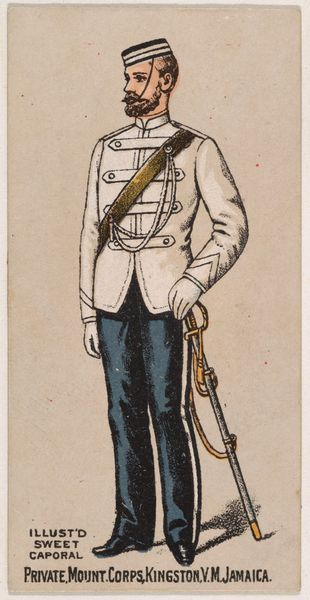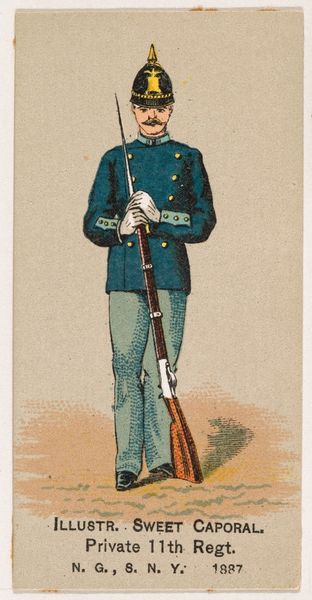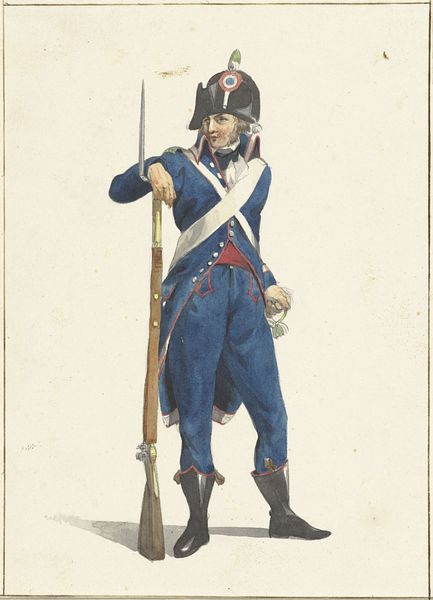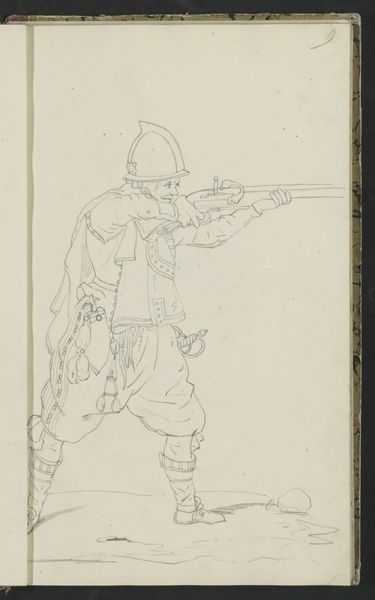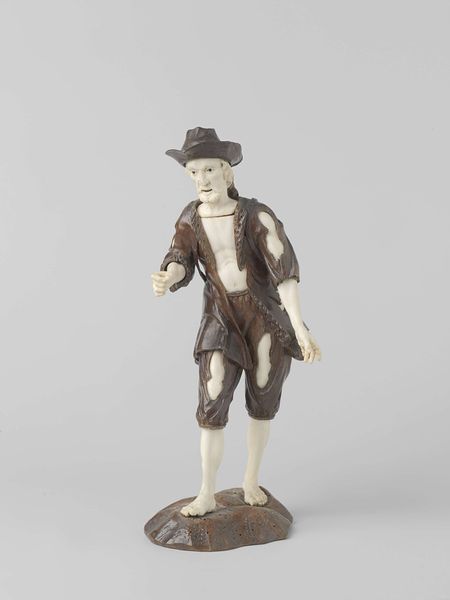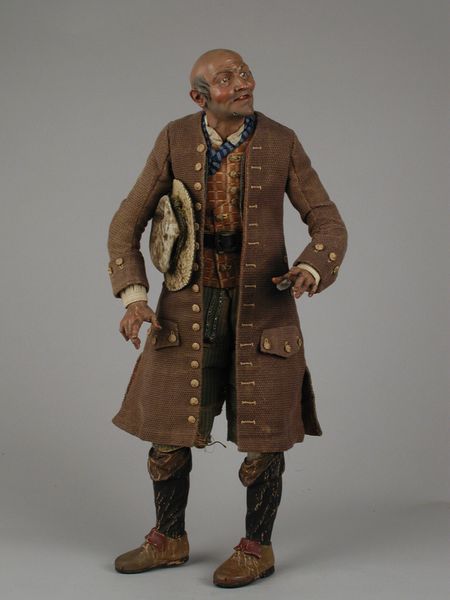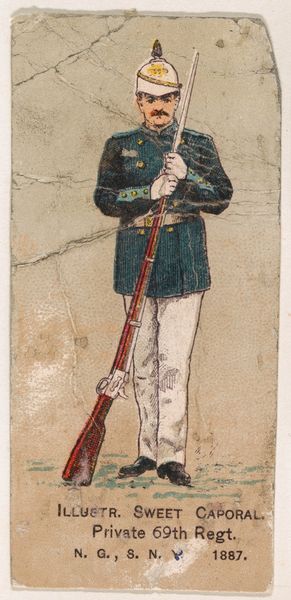
metal, wood
#
weapon
#
metal
#
wood
Dimensions: length 141.5 cm, height 18 cm, depth 8 cm, weight 5.4 kg, length 104.2 cm, diameter 18.9 mm
Copyright: Rijks Museum: Open Domain
Curator: Before us we have a flintlock musket made for the States Army, crafted between 1780 and 1805 and attributed to Johannes Rousseau. You can find it here at the Rijksmuseum. Editor: My immediate thought is the length. That slender, linear form extending out is somewhat elegant, albeit suggesting its martial function. Curator: Indeed, its elegance comes from a deliberate construction and assembly, focusing on formal principles such as balance, line, and proportion. Note how the metallic components play against the dark wood of the stock. Editor: But beyond formal qualities, it prompts thinking about the craftsmanship itself. What would the workshops where it was made have looked like? Consider the division of labor involved in the meticulous fashioning of each piece and their assembly. It forces a consideration of production and value in terms of craft, and the status assigned at the time. Curator: Of course, beyond craftsmanship, we must acknowledge this weapon as an object deeply entwined with power dynamics. The glint of metal becomes more sinister. It is through analyzing visual construction, its stark profile against a neutral backdrop, that the art functions most strongly as a meditation. Editor: But what of the materiality itself? This firearm's intrinsic value is derived from both material quality, its utility, and the political-economic realities that defined the States Army during this era. Think about the wood sourced and the metal forging. This is more than geometry at play, these are very pointed objects. Curator: Still, it is its formal unity—a tension between smooth lines and severe functionality—that draws me in. Editor: But these were instruments within wider imperial mechanisms. When evaluating craft, we are not considering singular talent; rather, how these processes intersected with power. Considering production methods exposes those narratives of consumption, labor and value. Curator: That is another dimension of thinking about this firearm. Thank you. Editor: Indeed, both views grant fuller understanding when viewed in conversation.
Comments
No comments
Be the first to comment and join the conversation on the ultimate creative platform.
